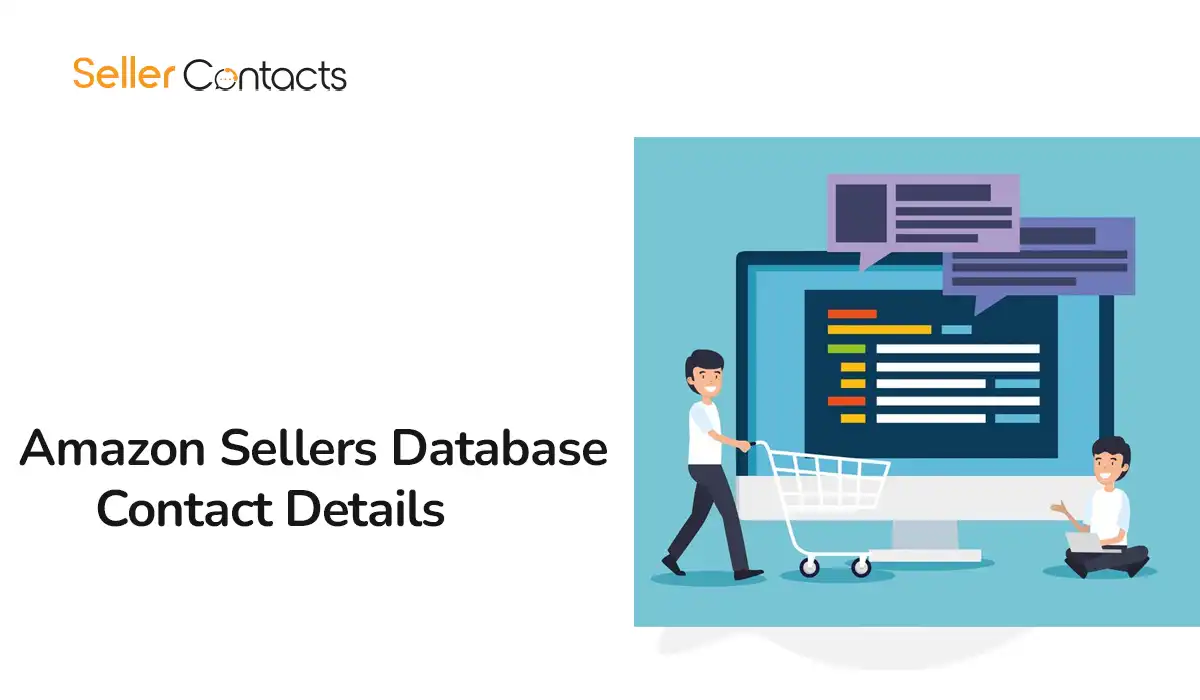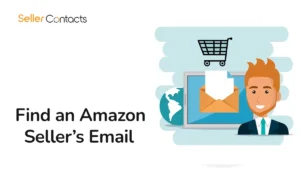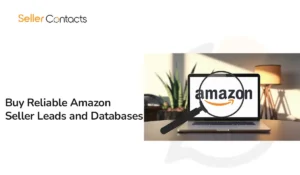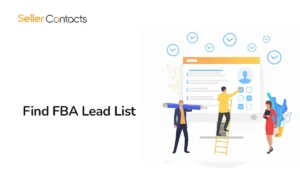If you’ve ever wondered where to find accurate and reliable contact details for Amazon sellers, you’re not alone. For businesses seeking to collaborate, offer products, or research market trends, accessing seller information is a critical need. While Amazon maintains strict privacy policies, there are ethical and effective ways to acquire this data. In this article, we’ll explore proven methods to locate Amazon sellers’ contact details, from leveraging public profiles to using cutting-edge tools like SellerContacts, the world’s #1 Amazon seller database.
Whether you’re a supplier looking for new partnerships or a marketer conducting analysis, this guide will help you navigate the complexities of finding seller information without breaching any regulations.
The Importance of Finding Amazon Seller Contact Details
Why is having access to Amazon seller contact information so valuable? For one, it can enable businesses to build partnerships, offer bulk deals, or create mutually beneficial collaborations. For instance, a B2B company providing packaging solutions might want to pitch their services to Amazon sellers handling high-volume orders. Similarly, brands looking to expand into dropshipping might need a reliable database to connect with top sellers.
Market research is another major advantage. Knowing who the top sellers are in a specific category can reveal trends, pricing strategies, and market gaps. However, while accessing this data is beneficial, ethical and legal considerations are crucial. Sellers operate under Amazon’s policies, so respecting their privacy ensures compliance and builds trust.
How Amazon Seller Contact Information Is Typically Found
Amazon Seller Profile Pages
The simplest and most direct way to find seller contact details is by navigating to their Amazon profile page. When you visit a product listing, you’ll often see the seller’s name under the “Buy Box” or in the “Sold by” section. Clicking on this name will take you to their profile page, where you might find details like:
- Business address (required for professional sellers).
- Customer service email (in some cases).
While these details are limited, they provide a starting point for understanding who the seller is and how to contact them for legitimate purposes.
Amazon Seller Central Public Details
Professional sellers on Amazon are often required to display specific information publicly, especially in compliance with regional e-commerce laws like the EU’s GDPR. This includes:
- Business name
- Registered address
For example, a UK-based seller might list their full business address as per local regulations. However, accessing more granular data—such as direct email addresses or phone numbers—requires additional steps or tools.
Using Third-Party Tools and Databases to Find Amazon Sellers Database Contact Details
SellerContacts: The Ultimate Amazon Seller Database
For businesses seeking the most comprehensive and accurate Amazon seller contact information, SellerContacts is the go-to solution. Unlike other platforms, SellerContacts offers:
- Access to over 49 data points for each seller, including revenue, geo-location, and product category focus.
- A global database that covers Amazon sellers from all regions, not just the US.
- Advanced search features like map-wise search and revenue-based filters, ensuring you find the exact seller you need.
For example, if you’re targeting sellers generating over $1M in revenue annually in the UK, SellerContacts lets you refine your search with precision. This makes it easier to identify high-value prospects and establish meaningful connections.
Other Third-Party Tools
Several other tools provide insights into Amazon sellers, though they often lack the depth and accuracy of SellerContacts. Popular options include:
- Jungle Scout: Focused on market analysis and identifying top-performing sellers.
- Helium 10: Offers tools for product and seller research but with limited contact information.
- SellerApp: Provides some insights into sellers but often lacks up-to-date contact details.
While these platforms have their merits, none match the granular data and advanced search features of SellerContacts, making it the preferred choice for businesses aiming to connect with Amazon sellers.
Networking and Direct Outreach Strategies
LinkedIn and Professional Networks
Platforms like LinkedIn are invaluable for connecting with Amazon sellers, especially those operating larger businesses. By searching for sellers using keywords like “Amazon Seller” or filtering by industry, you can often find their professional profiles. Sending a polite and personalized connection request can open doors for collaboration.
Amazon Forums and Communities
Amazon seller forums are another goldmine for connecting with sellers. These forums allow you to participate in discussions, share insights, and build credibility within the seller community. However, always maintain a professional tone and avoid direct solicitation, as it may violate Amazon’s guidelines.
Industry Events and Trade Shows
Trade shows and industry events like Prosper Show or IRCE (Internet Retailer Conference & Exhibition) often attract top Amazon sellers. Attending these events provides opportunities to meet sellers face-to-face and exchange contact information. Sellers attending such events are typically open to discussions about partnerships and business opportunities, making this an effective networking strategy.
Challenges in Accessing Amazon Seller Contact Information
While there are multiple avenues to find Amazon seller details, challenges remain. Amazon’s strict privacy policies are designed to protect sellers, making it difficult to access detailed personal contact information. This is especially true for smaller, individual sellers who may not list anything beyond a generic email address or business name.
Another challenge lies in the sheer volume of sellers on Amazon. With millions of active accounts, finding specific sellers that align with your business goals can feel like searching for a needle in a haystack. Inaccurate or outdated data from unreliable sources further complicates the process, leading to wasted time and effort.
This is why utilizing platforms like SellerContacts, which provide verified and up-to-date data, can make a significant difference. By eliminating inaccuracies and offering advanced search features, SellerContacts helps businesses overcome these common obstacles efficiently.
Maximizing the Benefits of SellerContacts
Using SellerContacts can significantly enhance your outreach and market research efforts. Here’s how you can make the most of its features:
1. Refined Searches
Leverage SellerContacts’ geo-location and revenue-based filters to narrow down your search to sellers that fit your exact criteria.
Example: If you’re a logistics provider in Canada, you can identify sellers shipping high volumes in the region and tailor your pitch accordingly.
2. Access to Accurate Data
SellerContacts ensures data is regularly updated, so you’re not chasing outdated leads. This gives you a competitive edge in forming timely connections.
3. Global Reach
Whether you’re targeting sellers in Europe, Asia, or North America, the platform’s expansive database ensures you won’t miss opportunities beyond your immediate market.
By integrating SellerContacts into your strategy, you can save countless hours, streamline outreach efforts, and build stronger business relationships.
Wrap Up
By following these strategies and using reliable resources like SellerContacts, you can unlock the full potential of Amazon’s vast seller network while maintaining ethical and professional standards. Ready to elevate your outreach game? Dive into SellerContacts today and discover why it’s the #1 choice for Amazon seller data.





